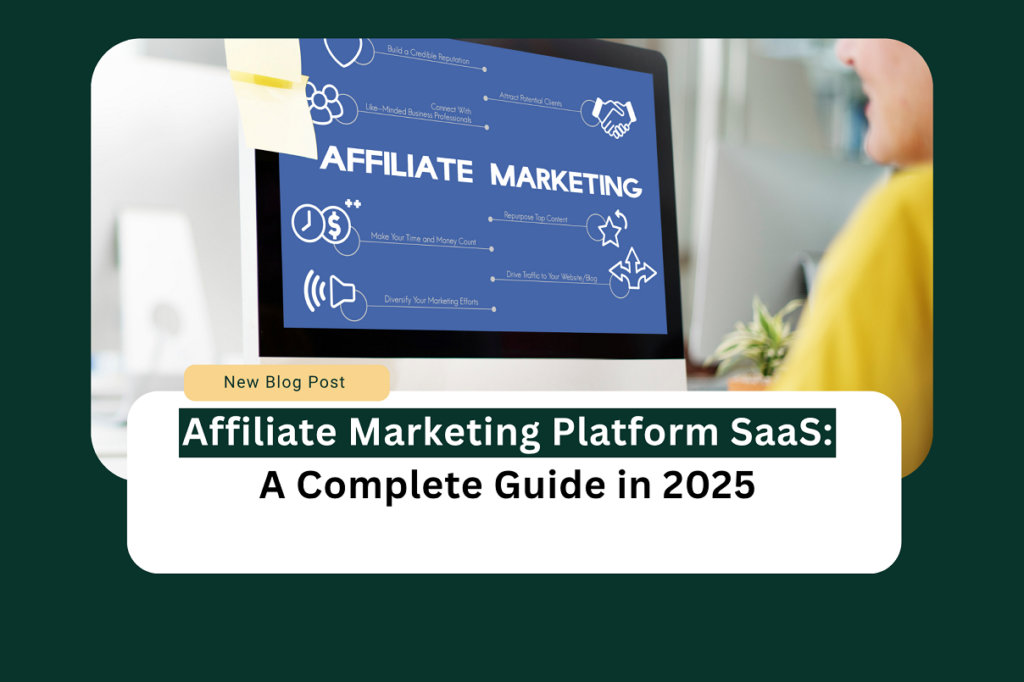Introduction
The global affiliate marketing industry is projected to grow to $17.3 billion by 2027, as per Statista’s predictions about today’s digital economy. Developers and entrepreneurs can harness the growing industry by creating a software-as-a-service (SaaS) affiliate marketing platform, which constitutes a groundbreaking business opportunity. The guide provides developers and business innovators with everything needed to develop a successful affiliate marketing platform that satisfies market needs and distinguishes itself from competitors.
The analysis of the affiliate marketing platform industry serves as a starting point.
The affiliate marketing platform SaaS sector expands quickly because organizations want efficient market expansion solutions that reduce traditional marketing department expenses. Research by Forrester Research demonstrates that businesses using affiliate marketing achieve a typical return on investment (ROI) of 12:1, which positions this strategy as one of the most economical marketing approaches in the market. Affiliate marketing programs have become essential for brands since they drive sales and brand awareness, which is why 81% of brands now use this marketing method.
A basic principle exists for developing software that connects merchants who want a promotion with affiliates who bring focused traffic. A successful platform needs market insight along with technical abilities as well as strategic planning for developing features that resolve the fundamental problems of marketplace participants.
Successful affiliate marketing platforms require essential features to function properly.
Robust Tracking and Analytics
Any affiliate marketing platform functions best when it tracks conversions precisely and assigns them to their appropriate affiliates. The Performance Marketing Association survey revealed that tracking reliability stands as the top priority for affiliates when selecting their platform.
Analytics dashboards should offer real-time insights into clicks, conversions, and commission calculations, with customizable reports that help merchants optimize their programs and allow affiliates to improve their strategies. Consider implementing multi-touch attribution models to fairly credit affiliates involved in different stages of the customer journey.
Commission Management System
Your affiliate marketing platform requires an advanced financial system that provides both complexity and simplicity for users. Affiliate commission structures should provide merchants with options between percentage-based flat-rate and tiered commission models. The Affiliate Industry Report from Impact shows platforms that allow merchants to customize their commission structures achieve 35% better retention rates than platforms that limit commission options.
Your system needs to perform automated commission computation while supporting various currencies and show complete reporting to merchants along with affiliates. The system should support multiple payment gateways, including PayPal and Stripe, and bank transfers to serve users worldwide and minimize payment obstacles.
Program Management Tools
An intuitive system combined with strong power should exist for merchants to effectively handle their affiliate programs. Your platform needs to provide adjustable application procedures along with automated affiliate approval systems and communication tools. Research conducted by Gartner shows that direct communication platforms between merchants and affiliates generate 28% higher engagement rates along with superior campaign results. Your platform should enable merchants to create marketing materials, set program rules and conditions, and execute compliance checks to protect them from fraudulent behavior and brand misuse.
Technical Architecture Considerations
The establishment of an expandable affiliate marketing system requires strategic technical design choices from the platform’s initial development stage. The development approach should follow several principles that must adapt to the specific technologies chosen by your team’s expertise.
Microservices Architecture
A microservices architecture should replace monolithic application development because it enables independent scaling of different platform components. The system stability remains intact as you can speed up development cycles for high-demand features through this approach. The O’Reilly Media report shows that microservices adoption brings 77% of organizations better scalability performance.
The core functions of tracking, reporting, user management, and payments operate independently through defined APIs to enable your development team to work simultaneously on components and deploy updates without system disruption.
Data Security and Compliance
Your platform should never compromise security because it handles sensitive financial and performance data from affiliates and merchants. The platform needs to deploy end-to-end encryption together with continuous security audits and full compliance with GDPR CCPA and PCI DSS standards from its initial launch. IBM’s Cost of a Data Breach Report shows that SaaS companies experienced data breaches costing an average of $4.24 million during 2023, thus security investments became essential for business operations.
Monetization Strategies
Tiered Subscription Models
The subscription plan system should include different pricing levels that accommodate businesses with various requirements. Your product line should include basic entry plans for new businesses and advanced premium plans for established companies with extensive affiliate networks. Strategic tiering implementation by SaaS companies enhances growth rates by 28%, according to the Subscription Economy Index from Zuora.
Transaction Fees
A small percentage-based fee should be applied to all profitable transactions that occur through your platform. Your revenue will match your customers’ achievements through this model, which motivates you to optimize conversion rates. The McKinsey research indicates platforms that use transaction-based revenue models expand at 1.5 times the rate of subscription-only revenue platforms.
Market Differentiation Strategies
Vertical Specialization
The platform development effort should concentrate on particular business sectors such as e-commerce, SaaS, and finance since affiliate marketing works most efficiently in these areas. Vertical-specific SaaS solutions receive 2-3 times higher valuation than general-purpose alternatives because they integrate deeply into industries while maintaining better customer retention statistics, as reported by SaaS Capital.
AI-Powered Matching and Optimization
The platform should use machine learning algorithms to process affiliate performance data for identifying the most suitable merchant-affiliated business connections. The implementation of intelligent matching systems by platforms results in 43% better conversion rates per a Forrester study thus delivering substantial value to all parties involved.
Conclusion
Successful development of an affiliate marketing platform SaaS depends on thorough planning and strategic feature development alongside continuous adaptation to market requirements. The affiliate marketing platform SaaS blueprint serves as essential guidance to create a solution that delivers value to both merchants and affiliates while sustaining business revenue. Your platform will excel in the competitive market through its commitment to strong tracking capabilities, adaptable commission systems and intuitive program management interfaces.
Your feedback regarding this affiliate marketing platform SaaS blueprint design is welcome.
Are you using any of these approaches within your existing business operations? Do you need clarification on any particular elements related to affiliate platform development? Post your comments through the section below and spread this article across your social media profiles if you find it useful.
FAQs
What level of funding does it take to create an affiliate marketing platform SaaS? Feature complexity determines the initial cost range between $50,000 and $150,000.
How long does it typically take to get a platform to market? The production timeline for most platforms spans between six and nine months.
What payment processing solutions should I integrate into my system? The payment methods of PayPal and Stripe along with bank transfers work for worldwide markets.
Is multi-level marketing support necessary? The solution requires special attention to MLM businesses when targeting them specifically.
What’s the typical customer acquisition cost? $500-$2,000 per merchant client, depending on niche.
Read More : Email marketing automation SaaS plan








